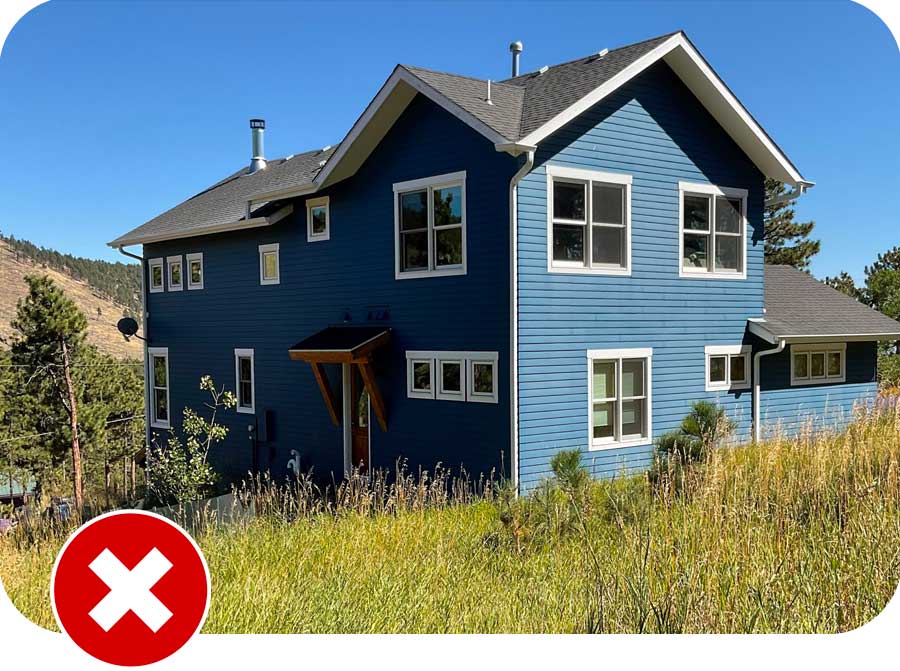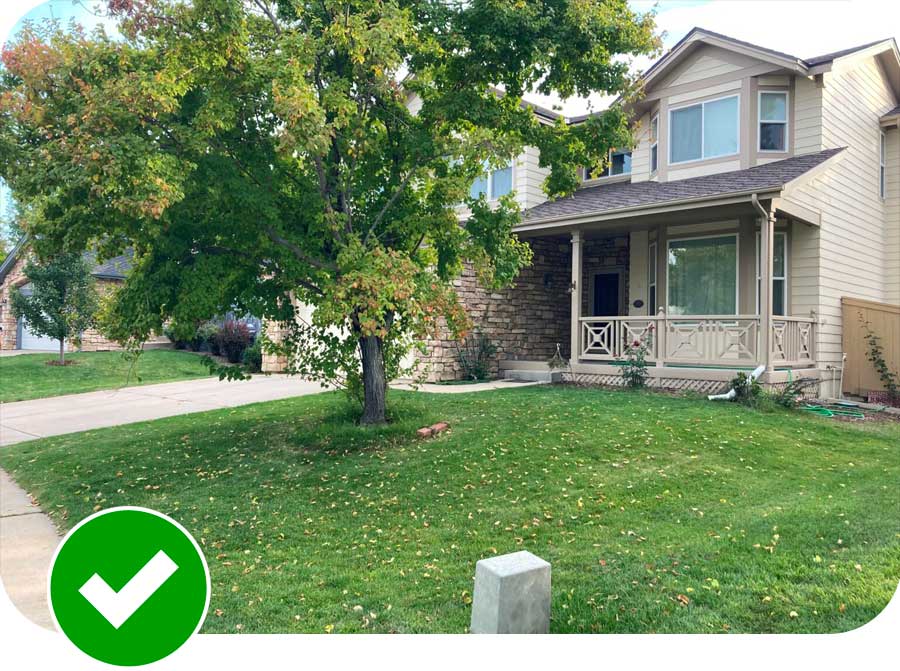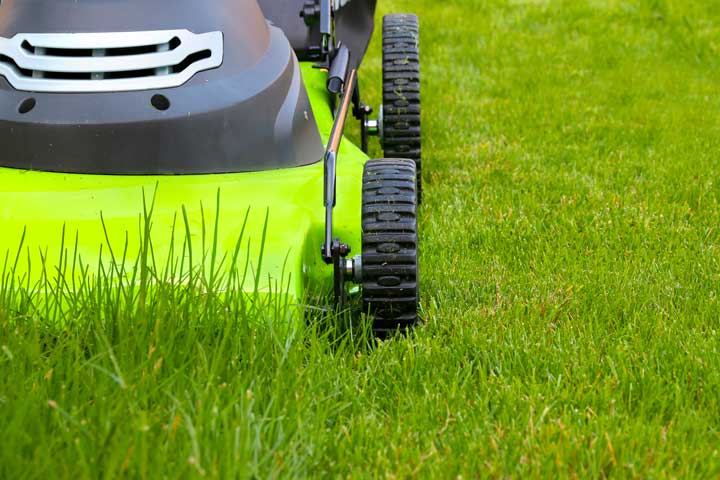
Grass is an important part of the natural environment, providing food, habitat, shelter, and breeding ground for a many of our beloved birds, mammals, and insects. Healthy native grasses help with fire mitigation in our open spaces by preventing drier and more bulky weeds from taking hold. Whether you live near mountain meadows, open prairie, or agricultural land, it’s important to remember:
We DON’T want to mow it all down!
We DO want to manage grasses near our homes, outbuildings, and communities.
To minimize the risk of home ignition, the 30-foot perimeter around your home or outbuildings should be designed to minimize fire intensity from radiant heat and direct flame.
- Tall grass, particularly when dry, will carry fire causing it to spread rapidly.
- Burning tall grass will create more embers than short grass because there is more biomass per square foot.
- In the short-grass buffer zone around buildings, fire should creep under stronger wind conditions or go out entirely if wind isn’t fanning the flames.


Mow or weed whack
- Mow grasses within 30 feet of any building including outbuildings like sheds and barns.
- Mow grasses to 4 inches tall or less if using a mower.
- Trim grass to 6 inches or less if weed whacking.
- Rake and remove grass. Reducing the fuel load which will create fewer embers.
- Mow as low as you can near wood fencing that’s on your property.
- Mow a strip along private roadways.
- Do this at least once after the grass has dried out. In Boulder County this tends to take place around Labor Day.
- Make it as wide as makes sense.
- This will increase your line of site.
- Provide space for vehicles to safely pass on narrow roadways, allowing residents to head out while responders head in.


Avoid mowing during the driest times of day
The best times to mow is 3 hours after sunrise and 2 hours before sunset. Sparks from a rock shooting out of a mower or weed whacker can cause grass to ignite.

Resources:
Electrifying our lawn equipment
According to the CoPIRG website: “Operating the “best-selling commercial leaf blower” for just one hour results in as much ozone-forming emissions as driving a staggering 1,100 miles – approximately the distance between Denver and Calgary, Canada.”
Mowdownpollution.org is the State’s Regional Air Quality Control Commission’s program offering vouchers toward the purchase of electric lawn equipment.
Check with your local municipality to see if they have any incentive programs.
Check with your energy provider to see if they have any incentive programs.
Open Space Grasslands Management in Boulder County
Open Space managers throughout the county are balancing the needs of the prairie and mountain meadows ecosystems – systems that are adapted to periodic fires – with the needs of residents who live nearby.
Connect with the City of Lafayette Open Space Wildfire Awareness webpage.
Read about Native Grasslands of Boulder County
Explore the Grasslands Working Group story map
Check the website of your local municipality’s Parks & Open Space, Open Space & Mountain Parks, or Parks & Recreation department and search for “grasslands management” for any updated grassland management plans
Do You Know?
Sparks from machinery, lit cigarettes, and the hot undercarriage of a car parked in tall grass are common causes of grass fire.


